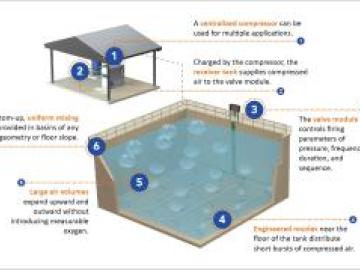VFDs Improve Multistage Blower Performance
Many designers and operators believe that multistage centrifugal blowers are not suitable for variable speed control. They also feel that multistage centrifugal blowers are an inefficient option for wastewater aeration. Implementing VFD control of their aeration blowers allowed the plant to improve energy efficiency. The reduction in energy expense paid for the system upgrade in less than two years.



